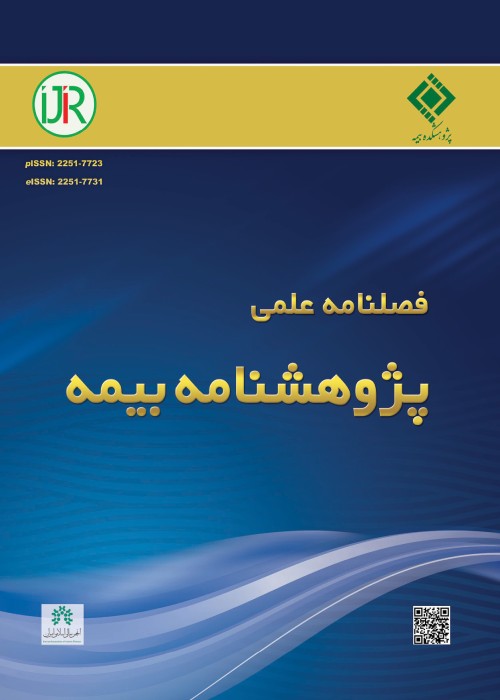Study of issuing mortality bonds in Iran and its pricing
This paper analyzes the possibility of publishing mortality bonds. This class of securities provides attractive investment opportunities for capital market and is a good hedging tool for managing the risk of life insurance companies. It allows the insurers to access a new source of financing and provides some facilities for investors to diversify their portfolios.
It is required to predict future rate of mortality in order to conduct pricing of mortality bonds. We used lee and carter model simulation mortality rate, as it is very flexible and can be used for limited data. First, the mortality rate of 5 _year age groups for years between 1996 and 2016 was calculated. The reason for using Gregorian calendar is that we use the united nation’s database. With Singular Value Decomposition (SVD), Lee-Carter model parameters were estimated and we have produced various scenarios for Iran’s mortality index for the next three years using the Monte Carlo simulation. In the last step, a sensitivity analysis for the interest rate and catastrophe threshold was provided to examine the price response to changes in interest rates and changes in the threshold.One of the characteristics of the q-forward contracts if that they can be used for hedging both mortality and longevity risk. Mortality risk refers to the risk that mortality rates are higher than expected whereas longevity risk refers to the risk that mortality rates are lower than expected. A q-forward is an agreement between two counterparties to exchange at a future date (the maturity of the contract) an amount equal to the realized mortality rate of a given population at that future date (the floating leg), in return for a fixed mortality rate agreed upon at the inception of the contract (the fixed leg). In principle there are hedgers who are interested in both sides of the trade of a q-forward contract.
The result shows that at maturity of three-year mortality bonds, increasing the interest rate, will rise the prices of these securities. Moreover, as the threshold grows, the price of these securities also increases; it is because the probability of default by issuer is reduced. Furthermore, by keeping other conditions constant, if the issuer determines the threshold range to two units, the price of these securities is reduced. Ultimately, the result shows that there is a small possibility of issuing these papers in the Iranian financial market.
In addition to introduction of mortality bonds which is an available investment instrument in global financial markets, this study aims to investigate possibility of issuing it in Iran and also overview the pricing of these bonds for domestic investors and issuers based on earnings discount approach.
- حق عضویت دریافتی صرف حمایت از نشریات عضو و نگهداری، تکمیل و توسعه مگیران میشود.
- پرداخت حق اشتراک و دانلود مقالات اجازه بازنشر آن در سایر رسانههای چاپی و دیجیتال را به کاربر نمیدهد.



